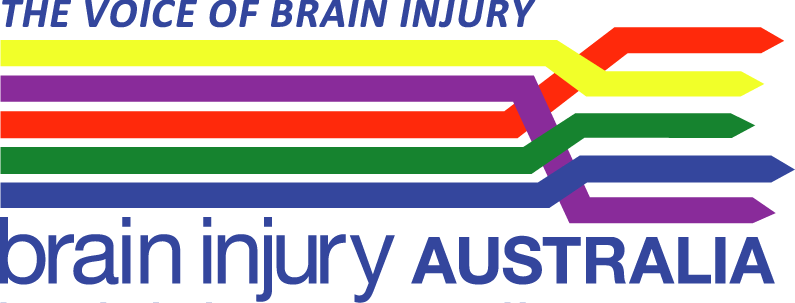- TOOLS FOR WORK
- Introduction
- T1 A person may have an ABI
- T2 Conversation tips
- T3 Looking for indicators of ABI
- T4 Strategies for
cognitive changes - T5 Case managers issues checklist
- T6 Sources of information
- T7 Individual program plan
- T8A Tips for
setting goals - T8B SMAARTER Goals
- T9 Managing and supervising staff
- T10 The disillusionment process
- T11 Preventing stress
- T12 Working with Families: Principles
- T13 Support workers:
WHS & Participant Risk - T14 Professional boundaries
- T15 Principles & Standards
- T16 Essential thriving guide
T13 Support workers: Managing WHS and Particpant Risk
Risk Management
Risk management is the practice of identifying potential risks in advance, analysing them and taking steps to reduce the risk or potential impacts
Risk management, in essence, is a process of:
a) Identify the risks
b) Establish the degree of risk and likelihood of it occurring
c) Take actions to minimise the risk
There are many forms of risk management, for example, financial risk management, worker health and safety risk management, disaster risk management.
Suport workers and partipants have specific risks:
Here are some useful tools
from the web site: Managing Risk providing attendant care
Exploring hazards and risks Care delivery in a person’s home environment should be delivered in the least intrusive way possible to the recipient and the household members. The worker and the Participant both have a right to be safe during a service. To achieve this, you will need to consider hazards, risk factorsand risks.
Service safety assessment and intervention plan Introduction The Service Safety Assessment and Intervention Plan is a risk management tool for you to consider using, modifying or to get ideas to add to your own risk management tools. The aim of this tool is to have a single document, which identifies: hazards and associated risk factors along with a tick box of common equipment and tasks that you will likely observe during a risk assessment a risk mitigation intervention plan.
Two Person Service This is a guide for how to think about when a two person service is needed and may provide insights into how a decision has been made.
Disasters and Emergencies To ensure worker and Participant safety in disasters and emergencies requires: Serviced provider preparedness Participant preparedness Participant risk assessment and intervention plan to support Participant preparedness.
Worker Health and Safety Tips: Introduction Worker Health and Safety You have a right to be safe at work. You and the Participant both have a right to be safe during a service.
Duty of Care vs Dignity of Risk
In providing attendant care that achieves worker and Participant health and safety important considerations are:
- Duty of care
- Dignity of risk
Both duty of care and dignity of risk need to be achieved.
This video examines the vital differences between duty of care and dignity of risk. Emi Golding from the Mental Health Recovery Institute explains when each applies and what to do about it.
Worker and Participant health and safety
This site is about managing risk in providing attendant care to achieve worker and Participant health and safety.
What is Workplace health and safety (WHS)?
Workplace Health and Safety (WHS), often referred to as Occupational Health and Safety (OH&S) involves the assessment and migration of risks that may impact the health, safety or welfare of those in your workplace.
This may include the health and safety of your Participants, employees, visitors, contractors, volunteers and suppliers. Service providers have legal requirements that they must comply with to ensure they meet WHS obligations.
WHS or OH&S – What’s the difference?
Before 2012, workplace health and safety (WHS) laws were known as Occupational Health and Safety (OH&S) laws. These laws differed across Australian states and territories. To make the laws more consistent across Australia, in 2012 the state and territory governments agreed to develop model laws (WHS Act and Regulations), on which they could base their health and safety laws.
WHS obligations for service providers
Service providers have legal responsibilities to implement health and safety practices in in the workplace.
Under Australian WHS/OH&S legislation service providers are legally obliged to:
- Provide safe work premises
- Assess risks and implement appropriate measures for controlling them
- Ensure safe use and handling of goods and substances
- Provide and maintain safe machinery and materials
- Assess workplace layout and provide safe systems of work
- Provide a suitable working environment and facilities
- Have insurance and workers’ compensation insurance for your employees.
Though it may cost to implement safe practices and install safety equipment, the effect of not taking action can be severe and costly. Complying with WHS requirements can prevent you from being prosecuted and fined, and help you to retain skilled staff.
WHS obligations for workers
People working in your organisation have work health and safety obligations to themselves, their workmates and others who may be impacted by the work they do.
They must:
- Comply with instructions given for work health and safety
- Use any provided Personal Protective Equipment (PPE) and be properly trained in how to use it
- Not wilfully or recklessly interfere with or misuse anything provided for work health and safety at the workplace
- Not wilfully place others at risk not wilfully injure themselves.

